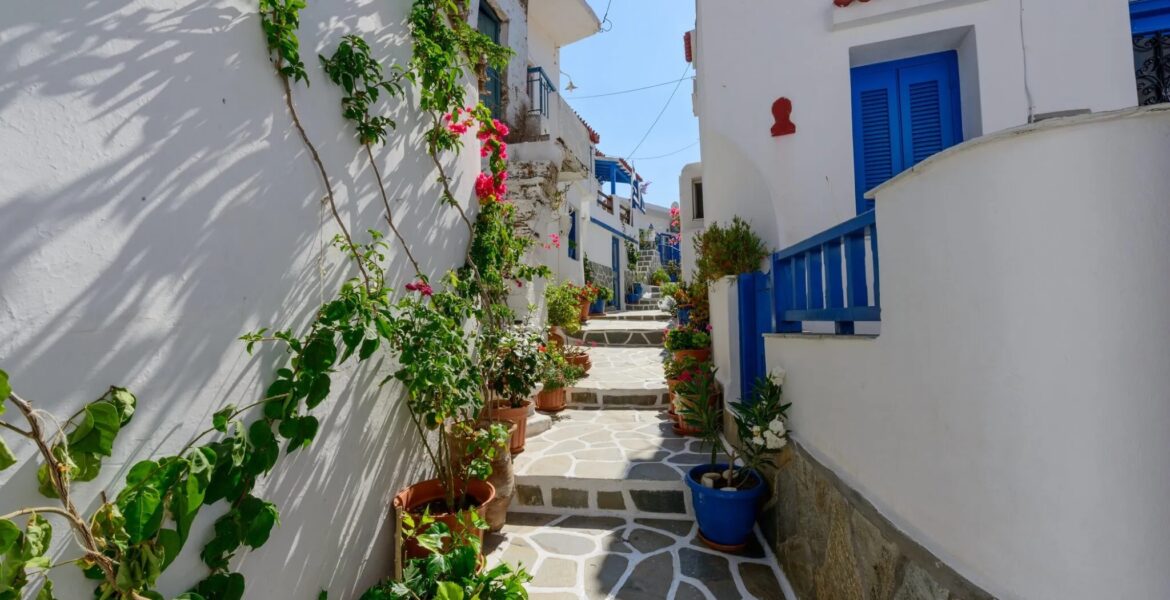Dryopida is one of the most architecturally beautiful settlements in the Cyclades.
When we think of the Cyclades, we imagine their most beautiful villages are on the beach, next to the blue waters of the Aegean Sea. However, those who have visited the Cycladic islands know this is only true in some cases.
Dryopida of Kythnos, for example, is a typical exception. It is a beautiful and special village with only 325 inhabitants (according to the 2011 census). It is not located next to the sea but built in the island's interior, at a strategic point, which you can use as a base to get wherever you want.
Many who have come here consider it more beautiful than even the famous Chora of Kythnos—Mesaria, as the locals call it—which is also located inland. The main reason for this is the distinctive architecture of its traditional houses, which are considered unusual for the Cyclades, as Travel points out.
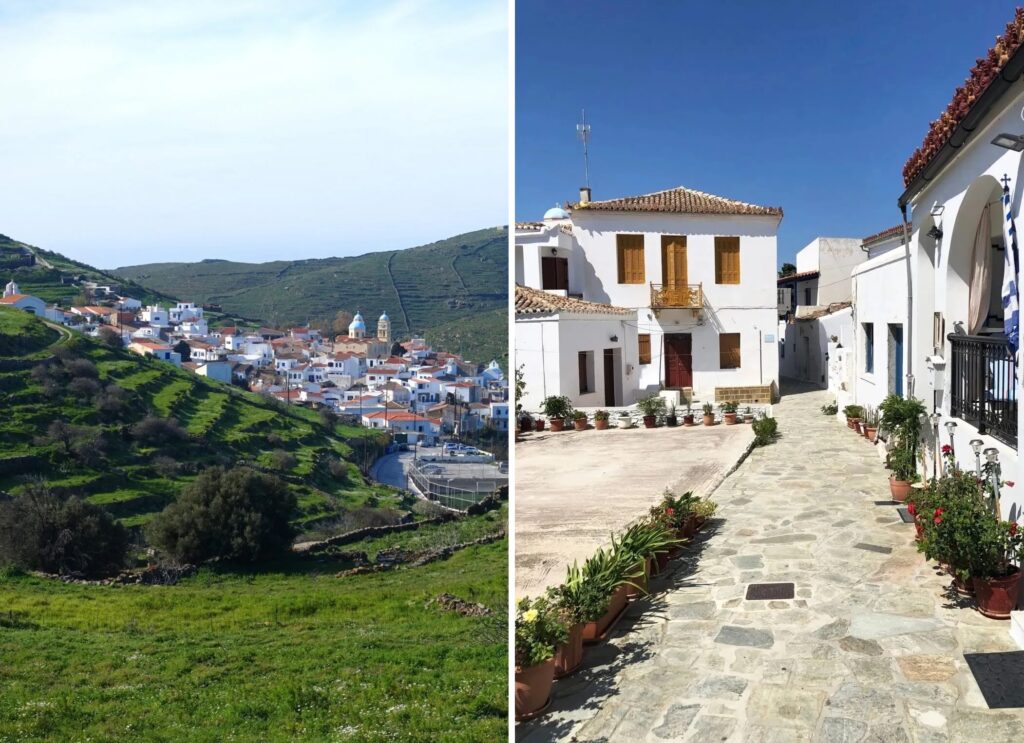
Picturesque alleys, tiled roofs and attractions
Dryopida is located in the southern part of Kythnos, built at an altitude of 190 metres between two hills. It is not known when it was founded, but the fact that it was built in a place completely invisible from the sea is certainly due to the need to protect its first inhabitants from pirate raids.
The earliest clear reference to the sources dates back to 1700. Initially, it seems the village was called Syllakas, a name that has survived even today, especially among the elderly.
It was once called "Chora", while the name Dryopida emerged at the time of King Otto in the 1800s so the village could be associated with the ancient name of Kythnos. This, in turn, reflected the fact that it was inhabited by Dryopes—a proto-Greek people.
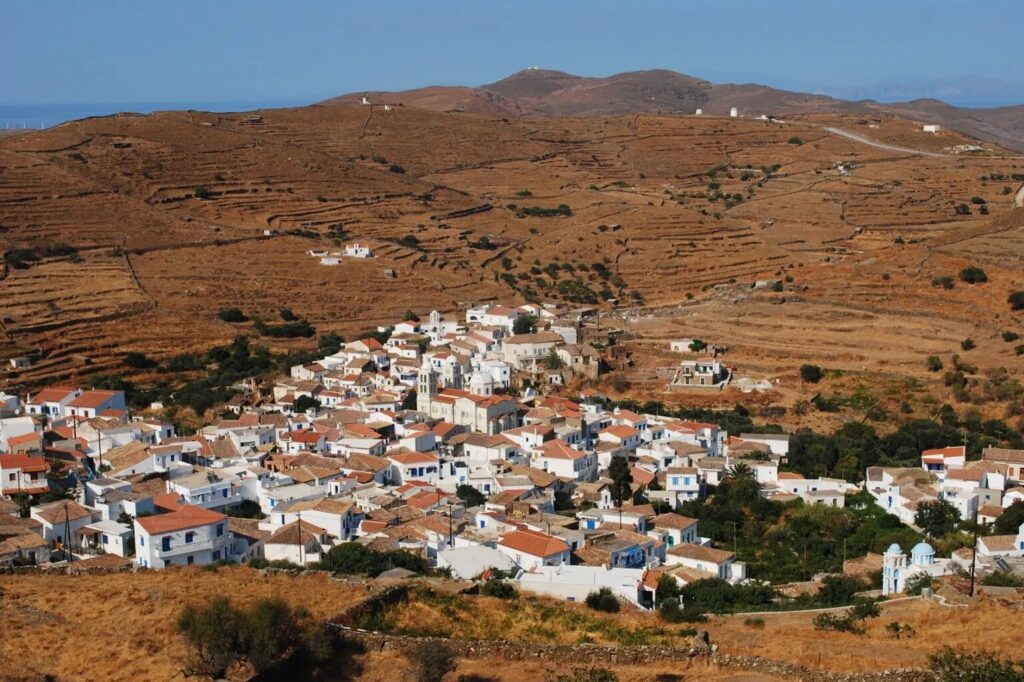
As soon as you arrive in Dryopida, you will realise that the first attraction is the village itself, with its picturesque alleys, arches, beautifully placed pots of colourful flowers and white, two-story houses with unexpected red roofs. These roofs, after all, are the most special architectural element here because they are made of tiles, unlike what usually prevails in the Cyclades.
Usually, the strong Aegean winds that blow on the islands do not allow the use of this building material. However, the location where Dryopida was founded offered natural protection from the wind (beyond pirates), thus enabling tile roofs to be built.
These are also connected to the village's older, non-agricultural past, echoing its inhabitants who went to work in the furnaces of Athens. There, they learned the urban habit of roof tiles and transferred it to their hometown.
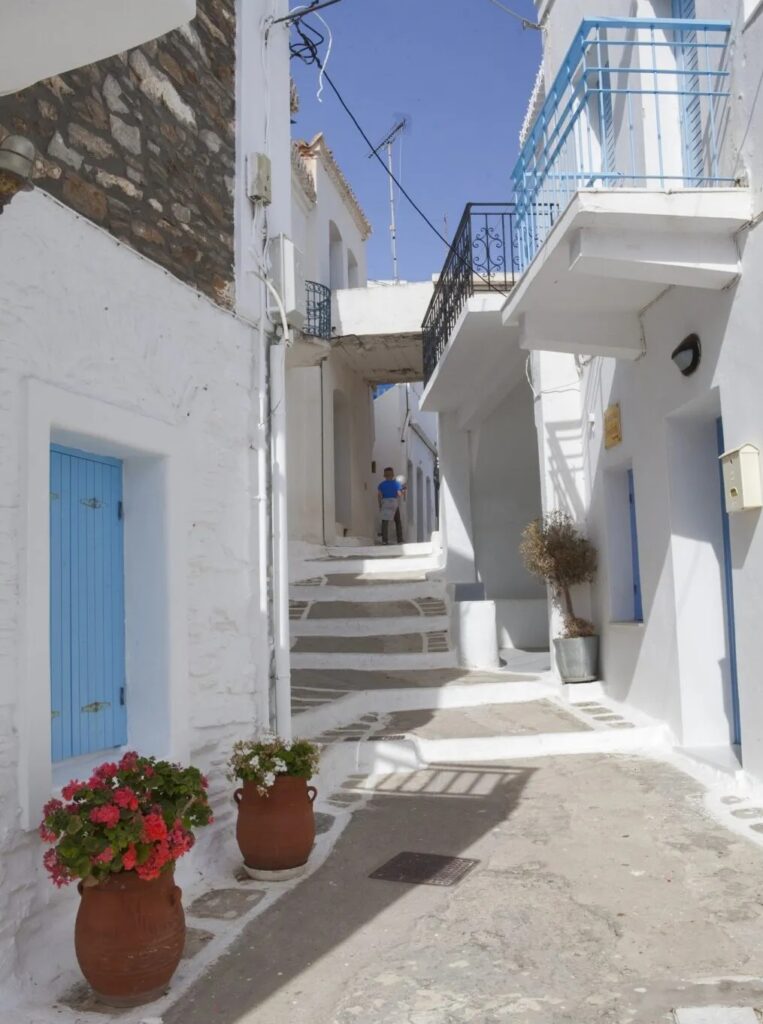
Strolling through the village, you will also see its churches: it is worth looking at Agios Minas, which has a wood-carved iconostasis and unique icons dating back to the 16th century.
Dryopida, however, also has museums.
The Folklore Museum—which operates daily but from 7 pm to midnight—features unique traditional costumes and a representation of an old Thermiotic house.
In the Holy Church of Agios Georgios, the Ecclesiastical & Byzantine Museum (09-14.00 and 17.00-24.00, daily) features old images and exhibits dating back to the Byzantine years.

The most crucial attraction, of course, is the Katafyki cave, located within the village's boundaries. At times, such as the Ottoman and German occupations, it served as a shelter for the wanted.
At the same time, shortly after the establishment of the Greek state, it also functioned as an iron mine.
For the ancient Syllakotes, there was also a place for celebrations and food storage - something like a natural refrigerator. Today, it impresses visitors thanks to the halls with stalagmites and stalactites and the sequence of natural galleries and artificial openings.
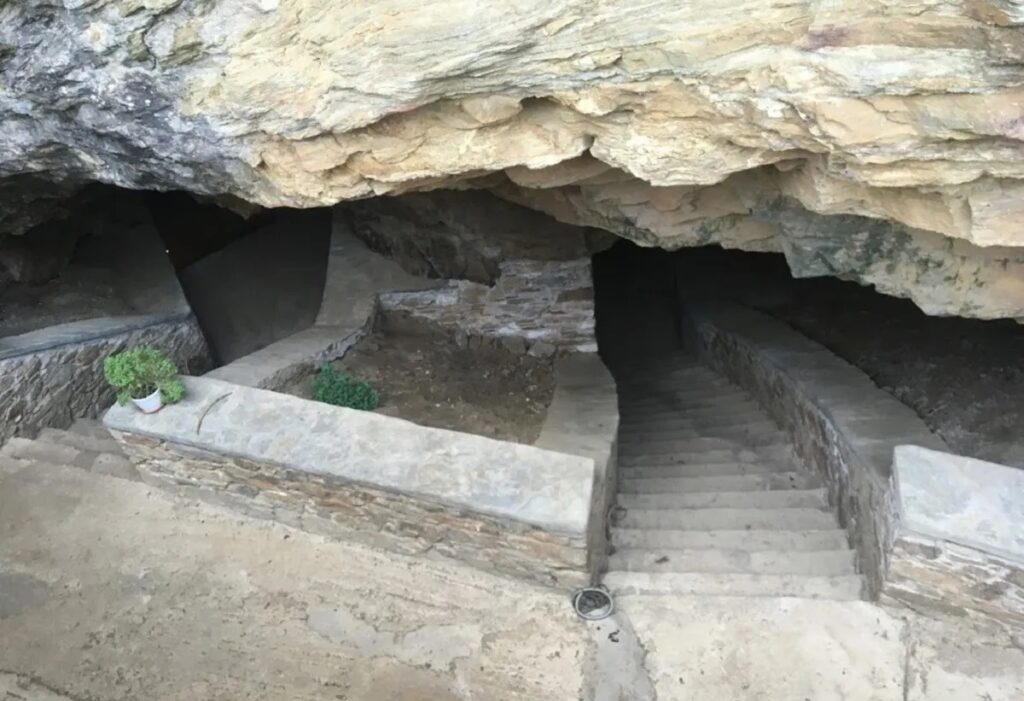
Options for accommodation, coffee and food
Dryopida is a relatively large village with all the amenities visitors could wish for. However, it is characterised by mild tourist development, which means that you will only find small hotel units in terms of accommodation.
However, there are several opportunities to rent Cycladic-style apartments or accommodations through Airbnb.
There are also quite a few places where you can sit for a coffee. These places tend to offer snacks or food of the hour, as is common in many rural parts of Greece.
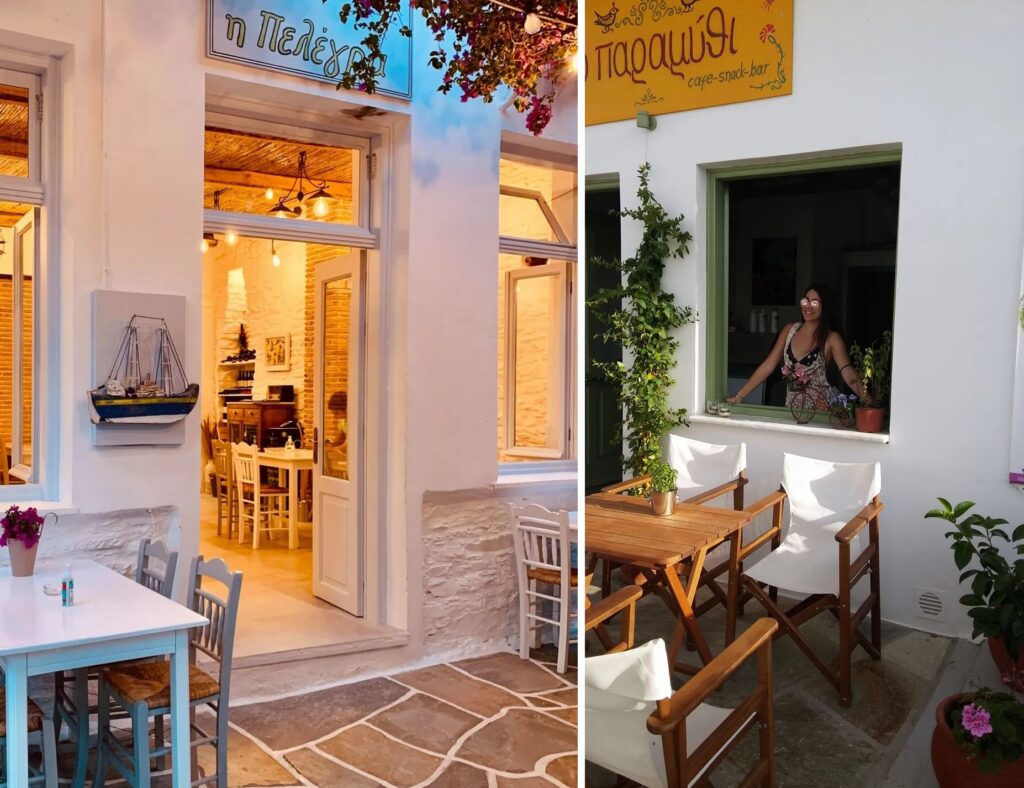
In a purely indicative selection, a famous coffee, sweets, and ice cream hangout is "Piatsa" in a small village alley. At the same time, "Sokaki" also has many clients relaxing in a lovely courtyard. "Paramythi" has good coffee and is a hangout even in the winter, while the sweets you will enjoy accompanied by Greek coffee at "Kythnon Anthoessan" (ekmek, galaktobourek, baklava, almonds with mastic) are said to be the best in all of Kythnos.
During the summer season, the "Koukos" wine bar also operates. It is a destination for evening entertainment, wine, and excellent cocktails.
Finally, the village also has good food options – the only asterisk here is that depending on the time of year you will be in Dryopida, you will need to make a phone call before booking a table because some shops are only open during the summer season, so they don't open before the middle of May.
The "H Pelegra" winery (22810-32322, 6944-576413) serves excellent stews and local meats. "Kamini tou Milas" (22810-32179) maintains a Cycladic environment by serving seafood and meat. Kartino Karavi" (22810 -33004) is oriented towards options with a more gourmet character.
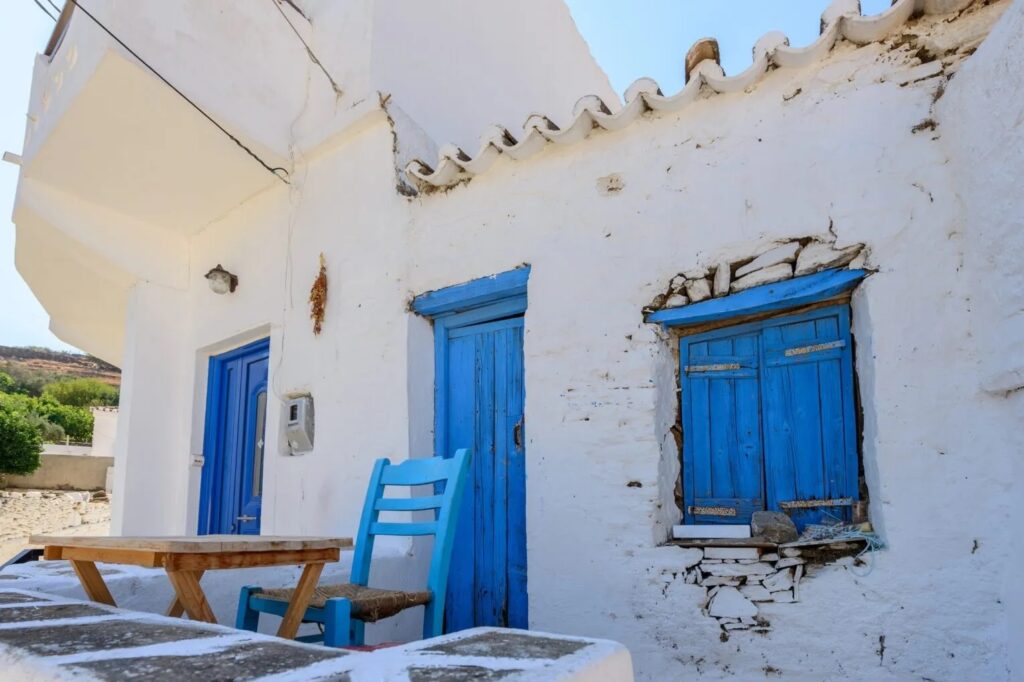
How to get to Dryopida
Due to Kythnos's proximity to Attica, it is easy to reach Dryopida if you start from Athens.
The ferry from Lavrio will take 2 to 2.5 hours to reach Merichas— the port of Kythnos — from where the village is only 7 kilometres away. The village is also very close to it is the capital, Mesaria (8 km).
Dryopida's location is particularly strategic for wherever you want to go in Kythnos. In other words, apart from the short distances to Mesaria and Merichas, all the roads leading to the southern attractions (Panagia Kanala, Flambouria, etc.) start from here.
With a 10—to 20-minute drive, you will also reach beaches such as Lefkes and Liotrivi on the island's eastern coast.
Finally, if you are a fan of hiking, you will find several beautiful routes starting from Dryopida: the easiest is to the aforementioned Lefkes (2.8 km), which you will reach in about 50 minutes.
The more experienced will prefer the three-hour route to Panagia Kanala (via Kalos Livadi), which is 10 kilometres long and includes a passage from the cool spring to Panagia Mathias.
READ MORE: Kavala: Journey to a jewel of Macedonia.

